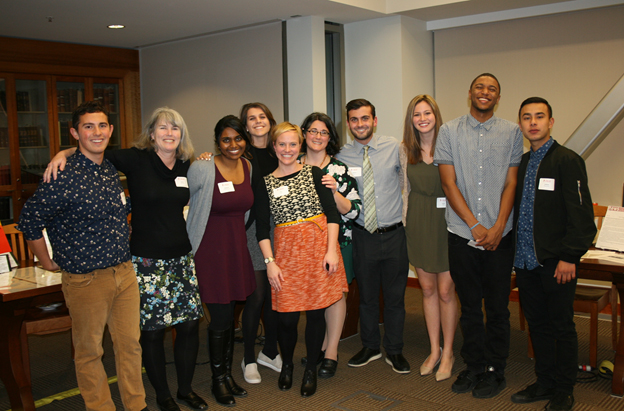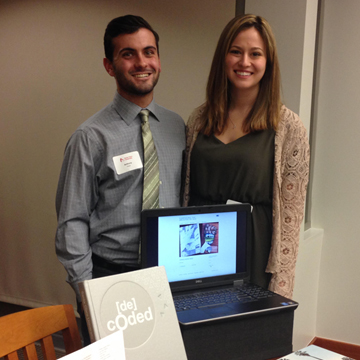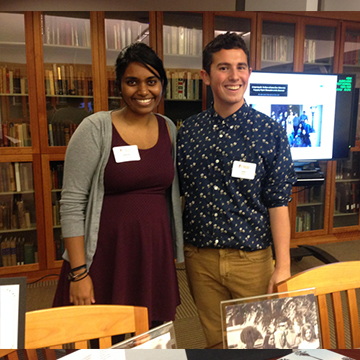
Lueck, Students Make Foray Into Digital Humanities
The library archive. The term brings to mind the closing scenes from Citizen Kane or Raiders of the Lost Ark: amazing collections of papers, photographs and other artifacts associated with an individual or a company, all safely secured behind lock and key. Generations of humanities researchers have conducted their research in such spaces, carefully handling artifacts of the past in order to better understand that past. The rapid growth of computer-based technologies, however, have fundamentally transformed the library archive. This fall, Amy Lueck (English) launched a pilot version of her Topics in Rhetoric and Writing course to explore how digital technologies can impact traditional humanistic archival research. Welcome to the “digital humanities.”
The College of Arts and Sciences launched its digital humanities initiative in 2015. The initiative encourages faculty, staff and students to explore cross-disciplinary approaches to the traditional questions associated with the humanities. The initiative brought together colleagues from several departments in the College, including English and Mathematics and Computer Sciences, as well as the members of the University Library staff. Leveraging off these initial efforts, Lueck’s course grapples directly with the how traditional scholarship is being transformed in the digital age.
“The foundation for my thinking about the course was getting them to engage with questions of composition and rhetoric through these other kinds of multi-modal ways of thinking and composing,” commented Lueck. “The main thing we are doing is we are composing archives.”

Students Anthony Hoyt and Cindy Stella presenting their digital humanities project in SCU’s Special Collections and Archives.
Lueck partnered with Sheila Conway and Nadia Nasr, the staff responsible for the archives and special collections in the University Library, about how best to engage the students. They decided to have the students begin their research in the SCU archives by handling the original artifacts in the collection and then examining the digital archive that library staff had created of those same artifacts.
“When we started, the students did an analysis of a digital archive,” noted Lueck. “We used the digital archives that Santa Clara had created [of some of its physical artifacts]. A lot of the students took for granted a kind of access to objectivity by the creator or curator of these digital archives. But that was quickly challenged once they started to do this analysis.”
By comparing the original, physical artifacts with its digital archive the students realized the choices they would face in building their own digital archive. Anthony Hoyt (History and English) noted that the digital archive was especially helpful with photographs. Overall, however, Hoyt noted, “[T]he online researching is beneficial and helpful, but does not equate to doing actual research in the archives and with the physical artifacts and documents.”

Students Sai Panneerselvam and Jack Moore explain their digital humanities project they created in SCU’s Special Collections and Archives.
Another student, Jack Moore (English), noted, “From reviewing digital archives it is typically much harder to interpret handwritten texts online, whereas typed texts actually work better digitally.”
Lueck noted that the students came to the class as “digital natives” who were more comfortable and familiar with the digital databases than with physical archives. As such, the students saw the physical archives as a more unique experience. Sai Panneerselvam (Mathematics and Computer Science) smiled broadly as she recalled the first time she dealt with the actual artifacts in the collection. “I was dealing with the original materials. I had to wear white gloves and handle the papers carefully because some of the material was quite old.”
Lueck wrapped up her pilot class with student presentations of what they have built. One of the main takeaways for student Cindy Stella (English) is the excitement of learning along with her classmates and instructor about the power of the archival experience. “It was exciting to see our work result in something other researchers will be able to use. Moving the materials into the computer was challenging at times but I can seen why planning and careful [metadata] coding is so important.”